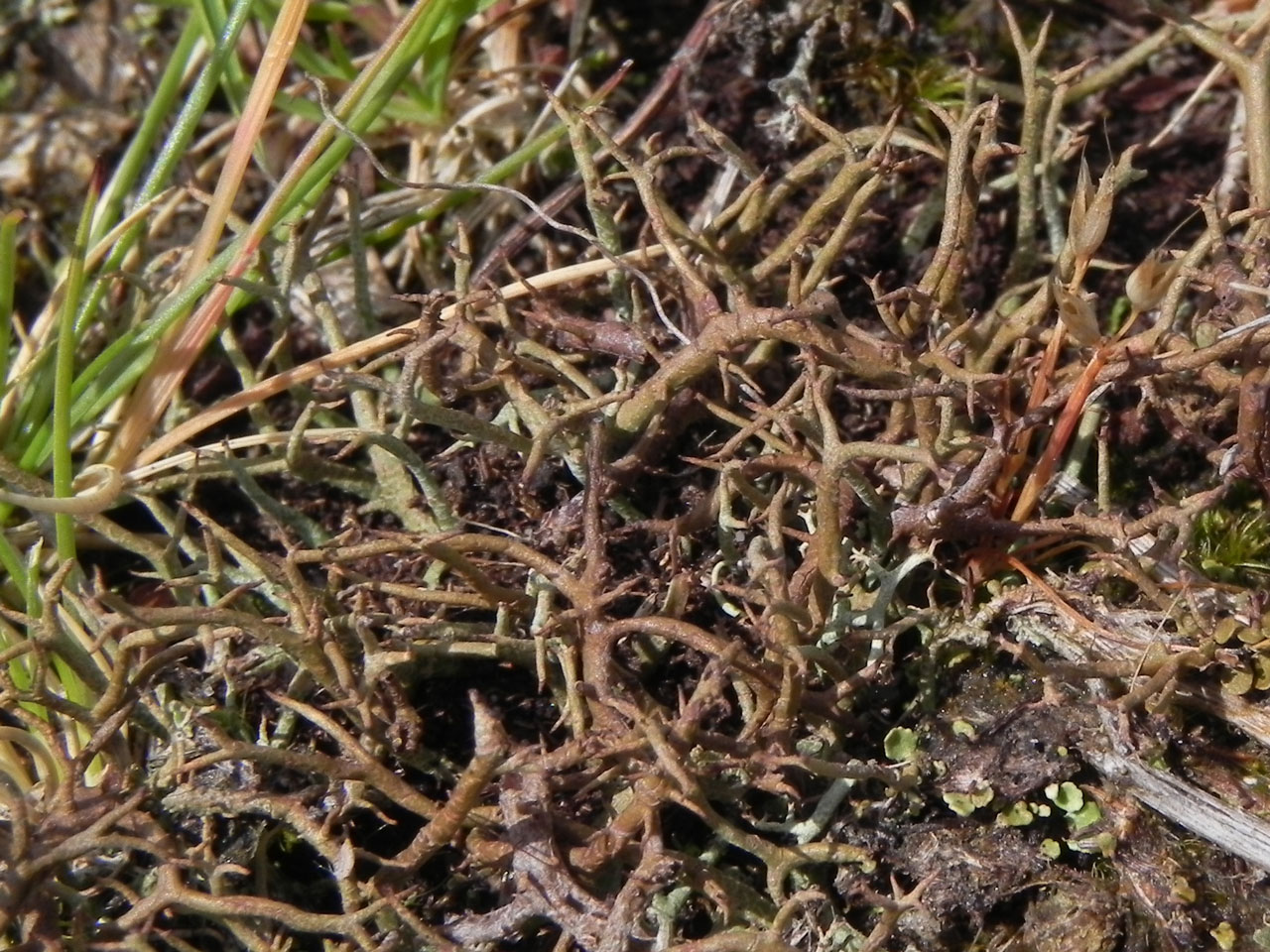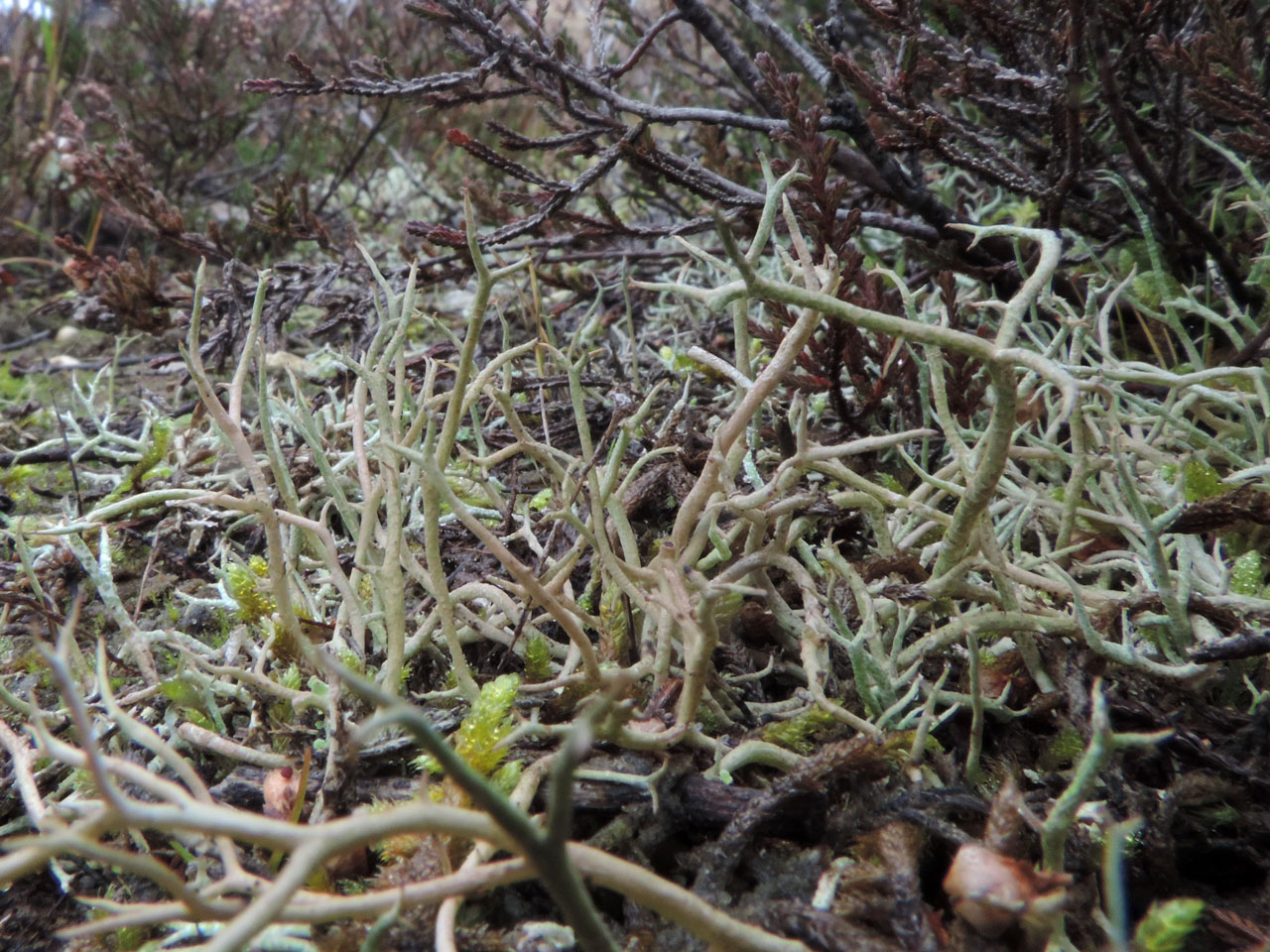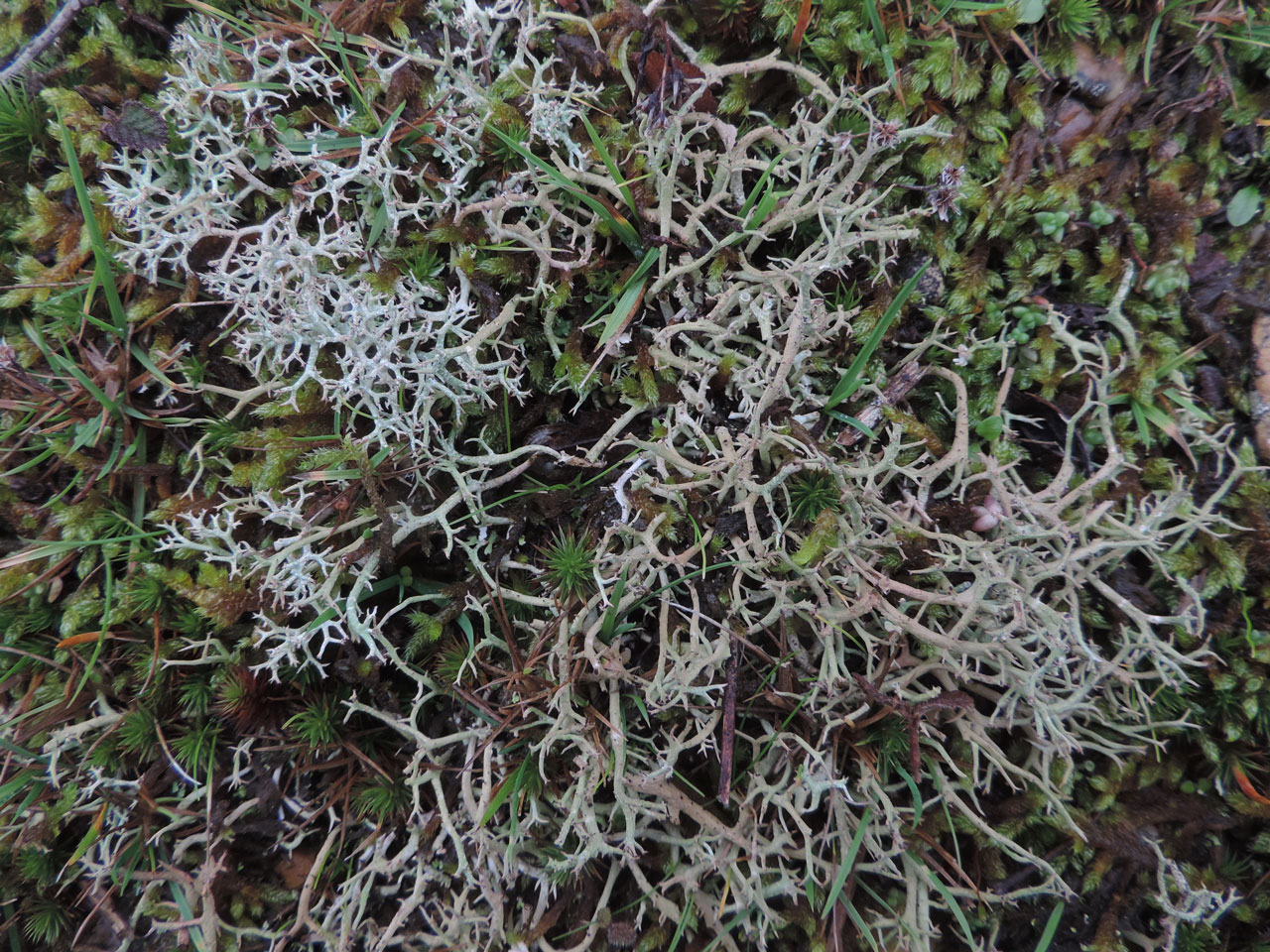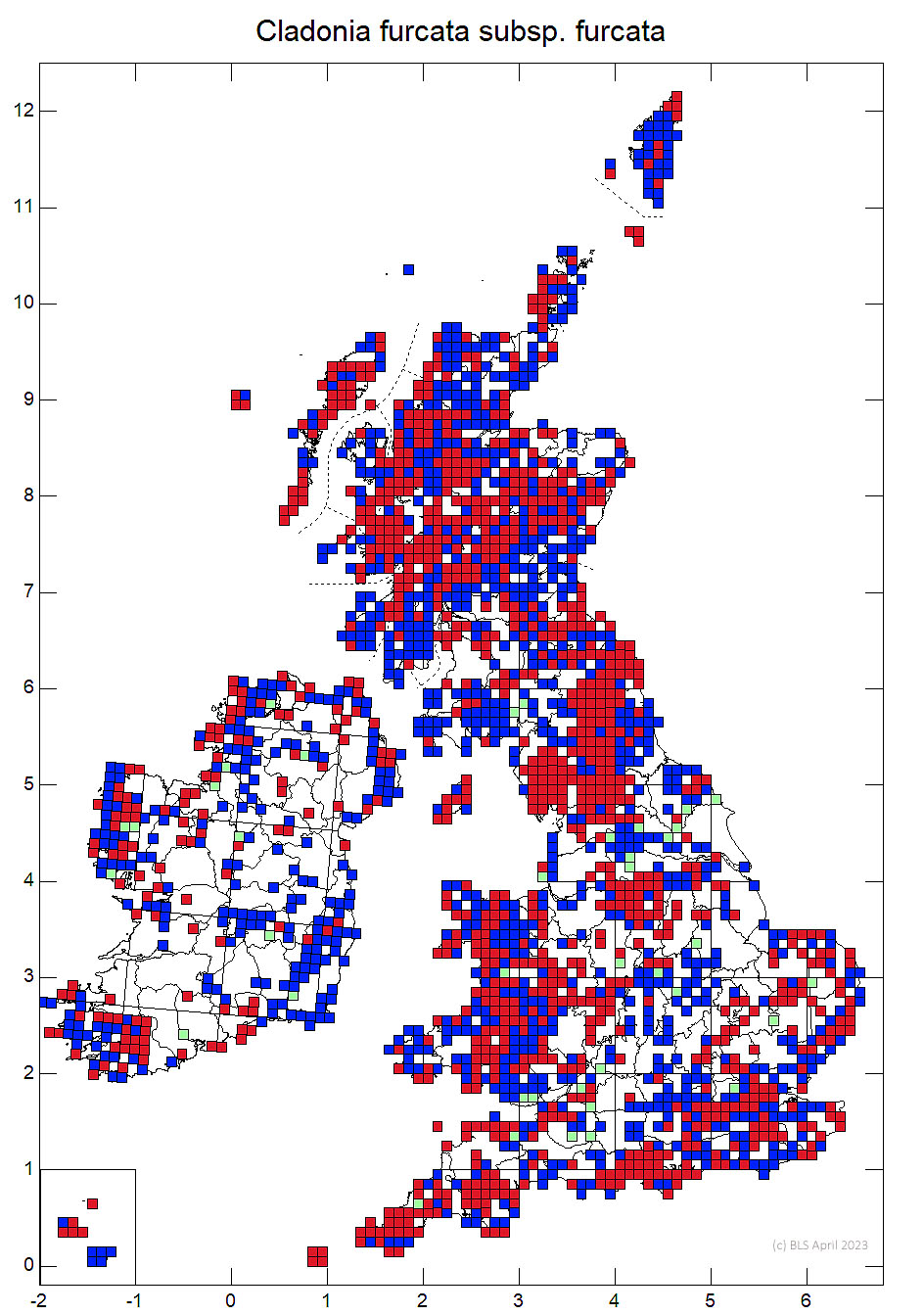Cladonia furcata subsp. furcata
A common False Reindeermoss of less acid heaths, dunes, grasslands and lawns, mossy rocks in woodlands and mountain summits, often preferring ± acid habitats but also in humus and litter on basic rocks where it often occurs with C. rangiformis. Easily confused with C. rangiformis, which is mainly separated by the more richly branched thallus, with the branches diverging at a wider angle. Normally C. furcata has a uniformly coloured cortex, typically brownish, and C. rangiformis, has a mature cortex which is mosaic-like white with grey-green patches, but not infrequently C. furcata, has a similar coloured crazy-paving effect, and the differences in branching patterns are the only reliable way to tell these lichens apart.
Podetia 2–5 (–8) cm tall, 0.4–1.0 mm diam., green to dark grey-green or olive-brownish in more open situations, slender, hollow, ± dichotomously branched, forming ± spiky, irregular tufts, the apice markedly pointed, without scyphi, the axils closed or sometimes perforate, fertile podetia with longitudinally split tips; surface corticate throughout, smooth, often faintly pale marbled-areolate, sometimes strongly so, occasionally with scattered squamules and cracks. Basal squamules disappearing, rounded, to 3 mm diam.; lower surface white. Apothecia brown, on short lateral branches towards the apices, ± corymbose, rather frequent. Pycnidia dark brown, terminal, abundant. Thallus C–, K± yellow, KC–, Pd+ red, UV– (fumarprotocetraric acid, rarely traces of atranorin).
Very variable, but characterised by the ascending, ± dichotomously branched podetia with pointed apices and a tendency to form irregular tufts. Cladonia furcata subsp. subrangiformis was recognised by James (2009) but a phylogenetic study by Pino-Bodas et al. (2015) could not distinguish adequately between the two taxa; the morphological differences may be at least partially habitat-related. It differs in the presence of raised starkly white ± circular concretion-like spots (of calcium oxalate crystals) towards the base of the olive to dark brown podetia formed by local rupturing of the cortex; the often prostrate and little- branched, worm-like, habit and robust appearance; and the presence of short lateral branches which often arise ± at right angles from podetia, more frequent in calcareous soils.
Cladonia gracilis is less branched and some podetia develop small scyphi; the juvenile stages of these two species are often difficult to separate. Easily confused with C. rangiformis, which is mainly separated by the more richly branched thallus, with the branches diverging at a wider angle. It also has a mature cortex which is mosaic-like with raised patches of green areoles on a pale decorticate background (×10 lens), although shaded morphs of Cladonia furcata are similar. For differences from C. scabriuscula and C. stereoclada, see those taxa.
On more productive heathlands, dunes, grasslands and lawns, mossy rocks in woodlands and mountain summits, often preferring ± acid habitats but also in humus and litter on basic rocks where it often occurs with C. rangiformis. In the latter habitat, an ecotype (formerly Cladonia furcata subsp. subrangiformis) occurs on calcareous soils in short turf, particularly on chalk. Cladonia furcata avoids low productivity very acid habitats.

Common throughout Britain and Ireland.
James, P.W. (2009). Cladonia. In: Lichens of Great Britain and Ireland (Smith, C.W., Aptroot, A., Coppins, B.J.,
Fletcher, A., Gilbert, O.L., James, P.W. & Wolselsey, P.A. eds): 309–338. London: British Lichen Society.
Pino-Bodas, R., Burgaz, A.R., Martín, M.P., Ahti, T. & Stenroos, S., Wedin, M. & Lumbsch, H.T. (2015). The phenotypic features used for distinguishing species within the Cladonia furcata complex are highly homoplasious. Lichenologist 47: 287–303. Link
Pino-Bodas, R., Sanderson, N., Cannon, P., Aptroot, A., Coppins, B., Orange, A. & Simkin, J. (2021). Lecanorales: Cladoniaceae, including the genera Cladonia, Pilophorus and Pycnothelia. Revisions of British and Irish Lichens 19: 1-45. Link
Text by Neil A Sanderson, based on Pino-Bodas et al (2021)





